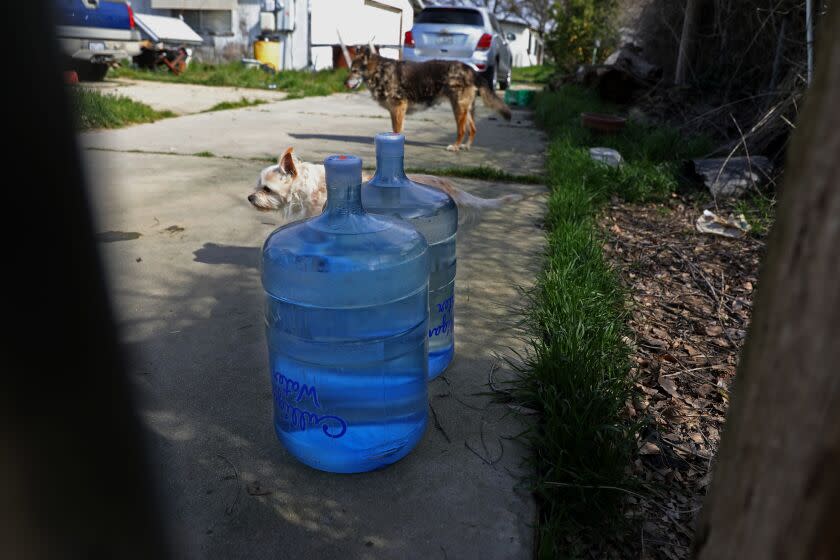Letters to the Editor: The drought is over? Tell that to Californians whose wells are dry

To the editor: George Skelton's view that the drought in California is over is short-sighted.
More than 80% of Californians rely on groundwater, which is still in a severe drought. Even with the rains we’ve had, already 121 new wells have gone dry this year, a 55% year-over-year increase. During this drought, more than 1,600 domestic wells have gone dry and most of those families who’ve lost access to drinking water are still relying on hauled or tanked water.
In fact, drilling of replacement wells is so slow, it would take longer than a decade to replace these wells, even if no more wells went dry.
The governor wisely removed most emergency orders pertaining to the drought for urban areas, while keeping protections in place to protect groundwater-dependent families and communities.
We need further executive action to speed up drilling of replacement wells now. Families without water don't have the luxury to wait for the legislative session.
Kyle Jones, Sacramento
The writer is Community Water Center's policy and legal director.
..
To the editor: Skelton accurately describes the wet-dry pattern of climate that California has always experienced. His column brings to mind an excerpt from John Steinbeck's novel "East of Eden," which is set in the Salinas Valley in the early 1900s:
"I have spoken of the rich years when rainfall was plentiful. But there were dry years, too, and they put a terror on the valley. The water came in a thirty-year cycle. There would be five or six wet and wonderful years ... and the land would shout with grass.... And then the dry years would come.... It never failed that during the dry years the people forgot about the rich years, and during the wet years they lost all memory of the dry years. It was always that way."
Mike Urane, Long Beach
..
To the editor: Skelton supplies but one piece of statistical data, the record Sierra snowpack, along with the current flooding from seasonal intense rain to support his argument that the drought is obviously over.
An informed hydrologist would tell us that there are no less than four, and perhaps now five, criteria employed to statistically validate the existence of drought — those being meteorological, agricultural, hydrological, socioeconomic and, perhaps of increasing concern, ecological.
If Skelton actually conducted some investigative effort, starting at the University of Nebraska Drought Mitigation Center, he might learn that his opinion that the governor should declare the drought over, while satisfying political expediency, is not supported by the evidence.
Michael J. Harley, Laguna Niguel
This story originally appeared in Los Angeles Times.

